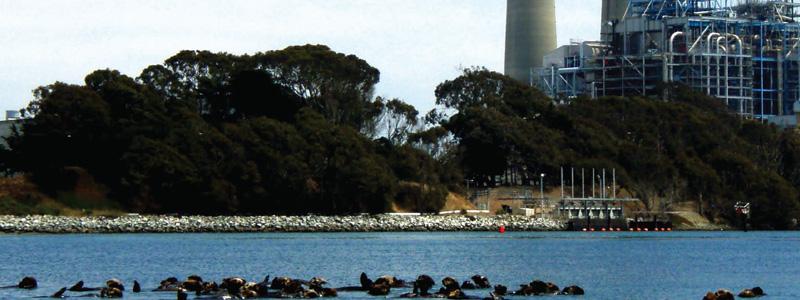An Ocean Network Protected, But Not from Harm



Apply »
Summer Session Application for non-degree-seeking students
Summer FAQ »
Covering the most common questions asked about VLGS Summer Session
May 23, 2017
By Sarah Reiter, Adjunct Faculty, Vermont Law School; Megan Mach, Postdoctoral Research Fellow, Hopkins Marine Station, Stanford University
Despite legal protection, species and habitats found in California’s Marine Protected Areas (MPAs) remain exposed to harmful ocean, land and climate-based stressors. In this study, published in Ocean and Coastal Management, we used a mapping approach to assess the cumulative impacts of various stressors on the network. Not surprisingly, we found that while climate stress impacts MPAs across the entire network, the coastline between San Francisco and San Diego is more impacted by land stress than the less populated coast to the north. Moreover it is the accumulation of stressors in coastal systems that are likely to have the greatest impact. This is of particular interest as these stressors are most frequently regulated individually, rather than as a suite of impacts.
 Our approach holds promise for applied management practice because it can be used to pinpoint which stressors are harming the network, where, and to what extent. However, we see a need for interdisciplinary collaboration across the law-science interface in order to address the discrepancies between the way the model, and the law, treat the various stressors. Such collaboration will contribute to moving towards a network that is truly protected from the stress it currently faces.
Our approach holds promise for applied management practice because it can be used to pinpoint which stressors are harming the network, where, and to what extent. However, we see a need for interdisciplinary collaboration across the law-science interface in order to address the discrepancies between the way the model, and the law, treat the various stressors. Such collaboration will contribute to moving towards a network that is truly protected from the stress it currently faces.
Fig. 1. MLPA regions (red lines and labels) along the California coast. Within each region polygons representing MPAs reviewed in this study are colored by spatial patterns of cumulative impact scores (in gradients of red).